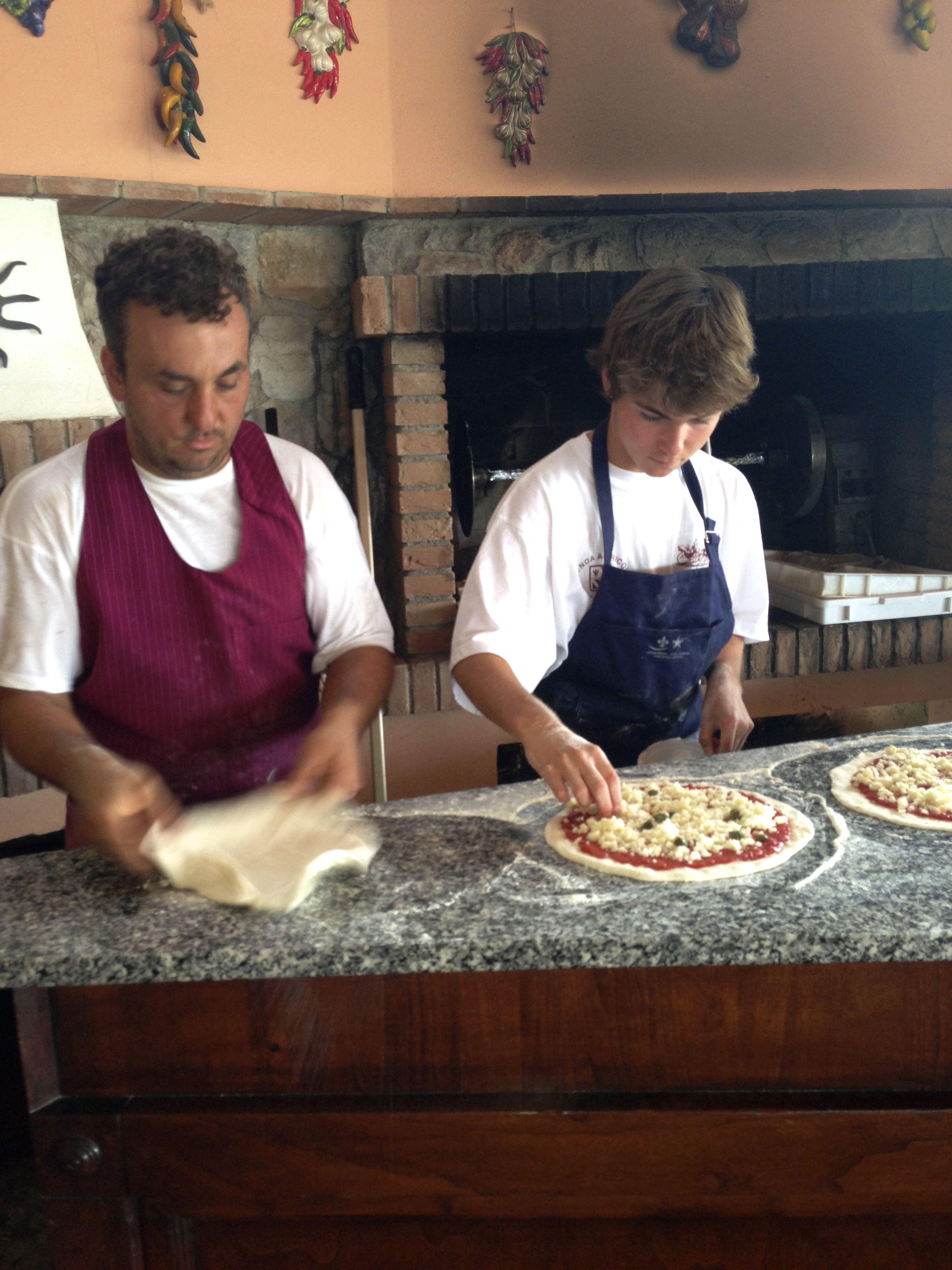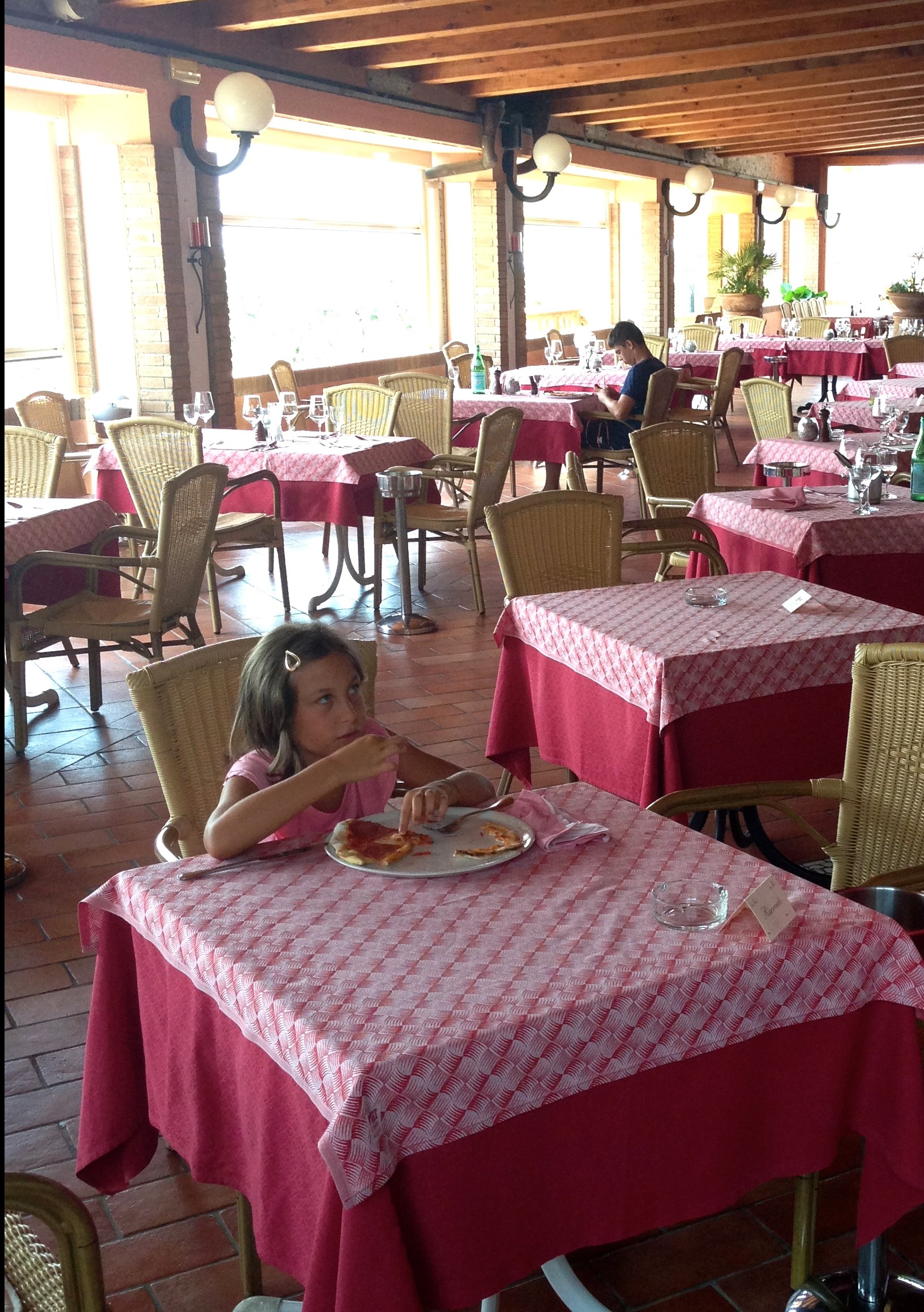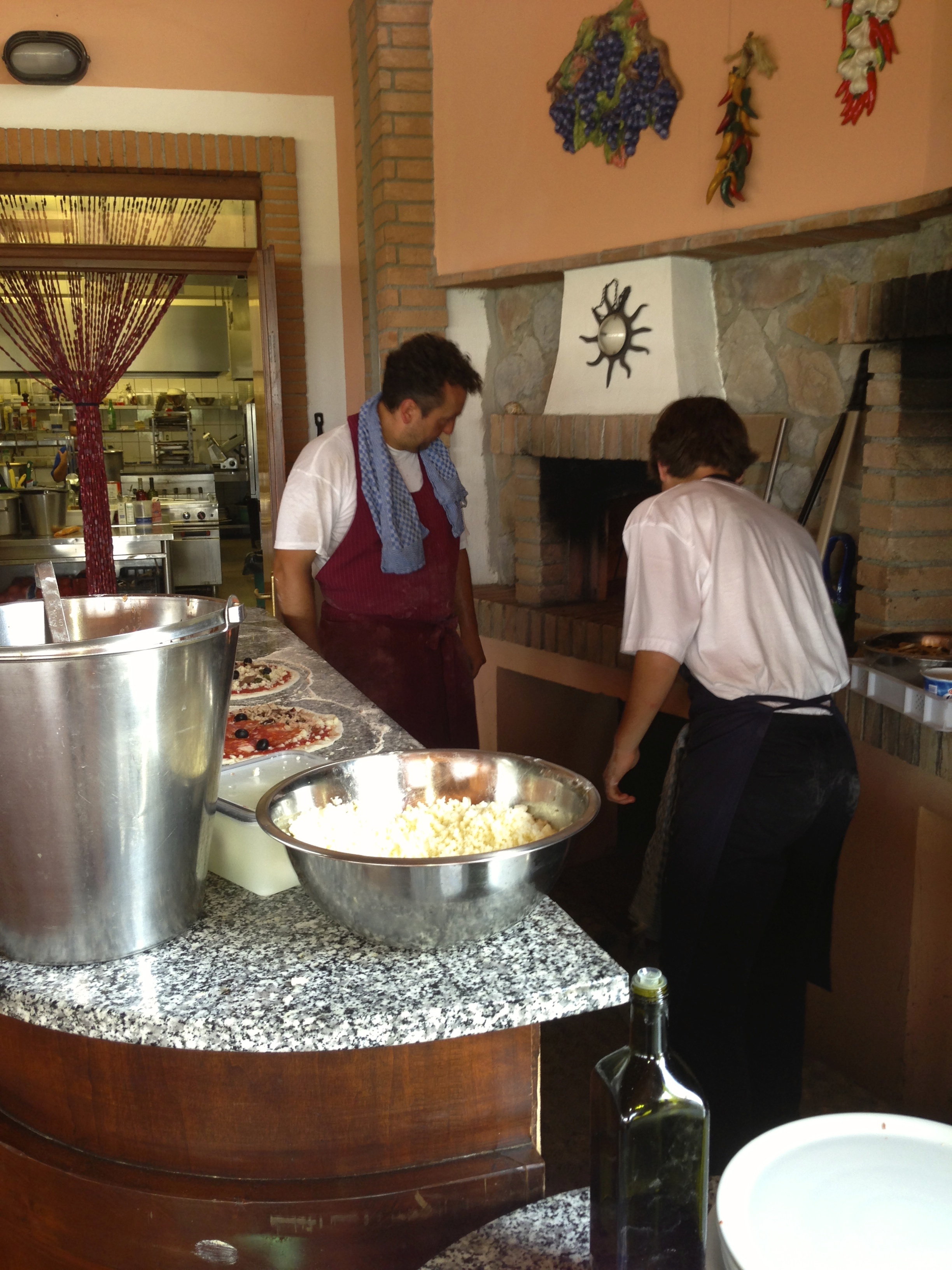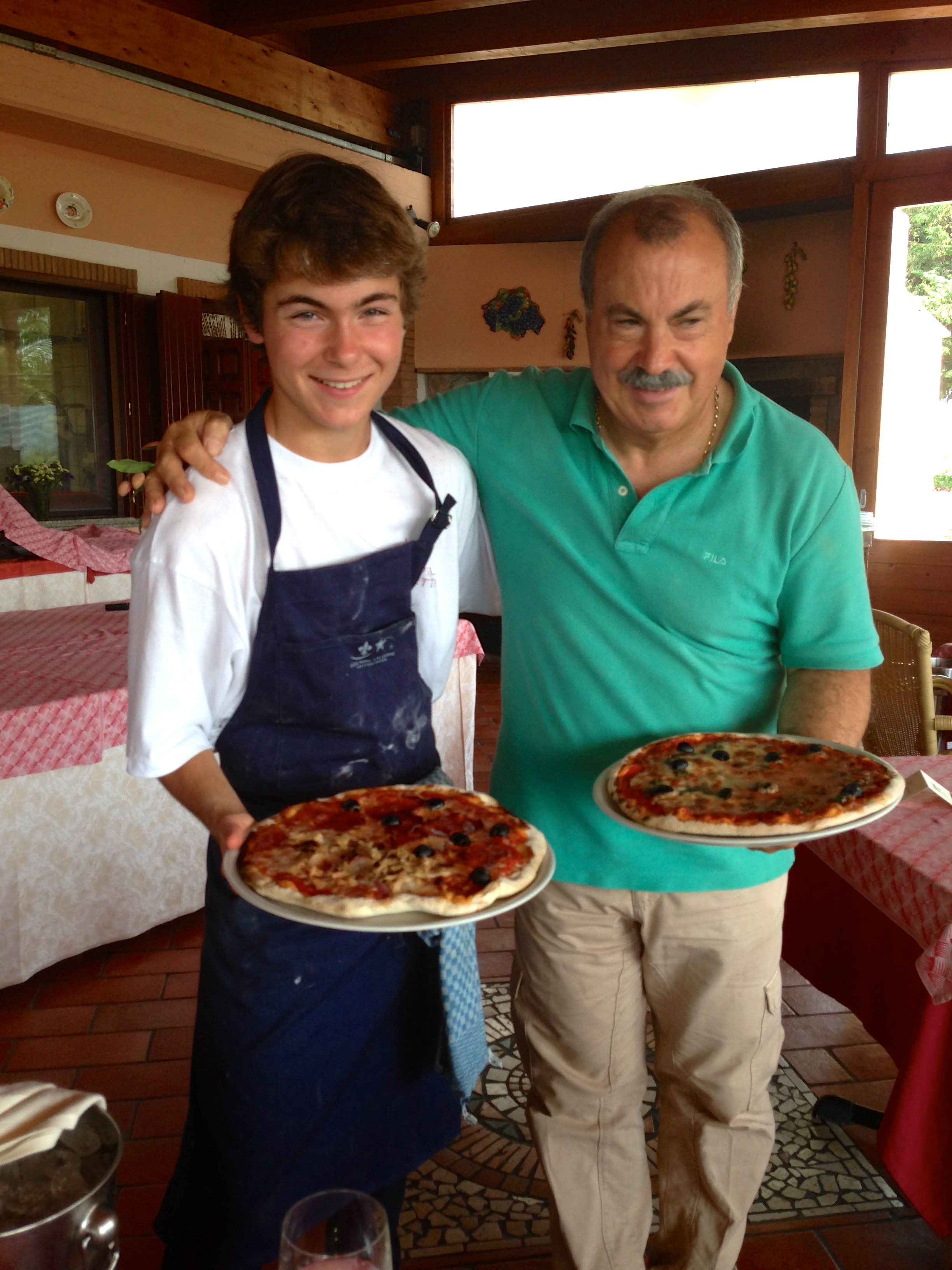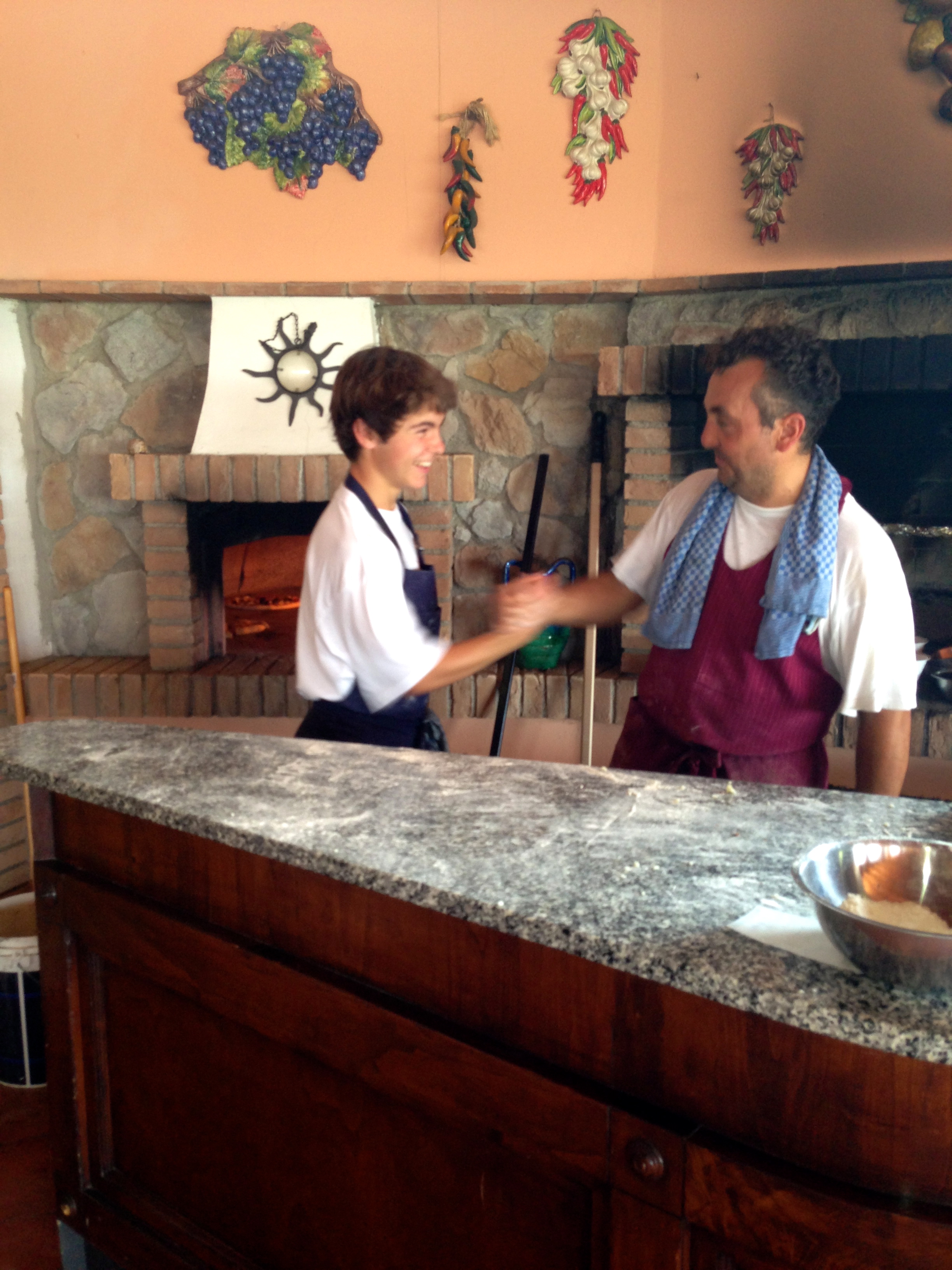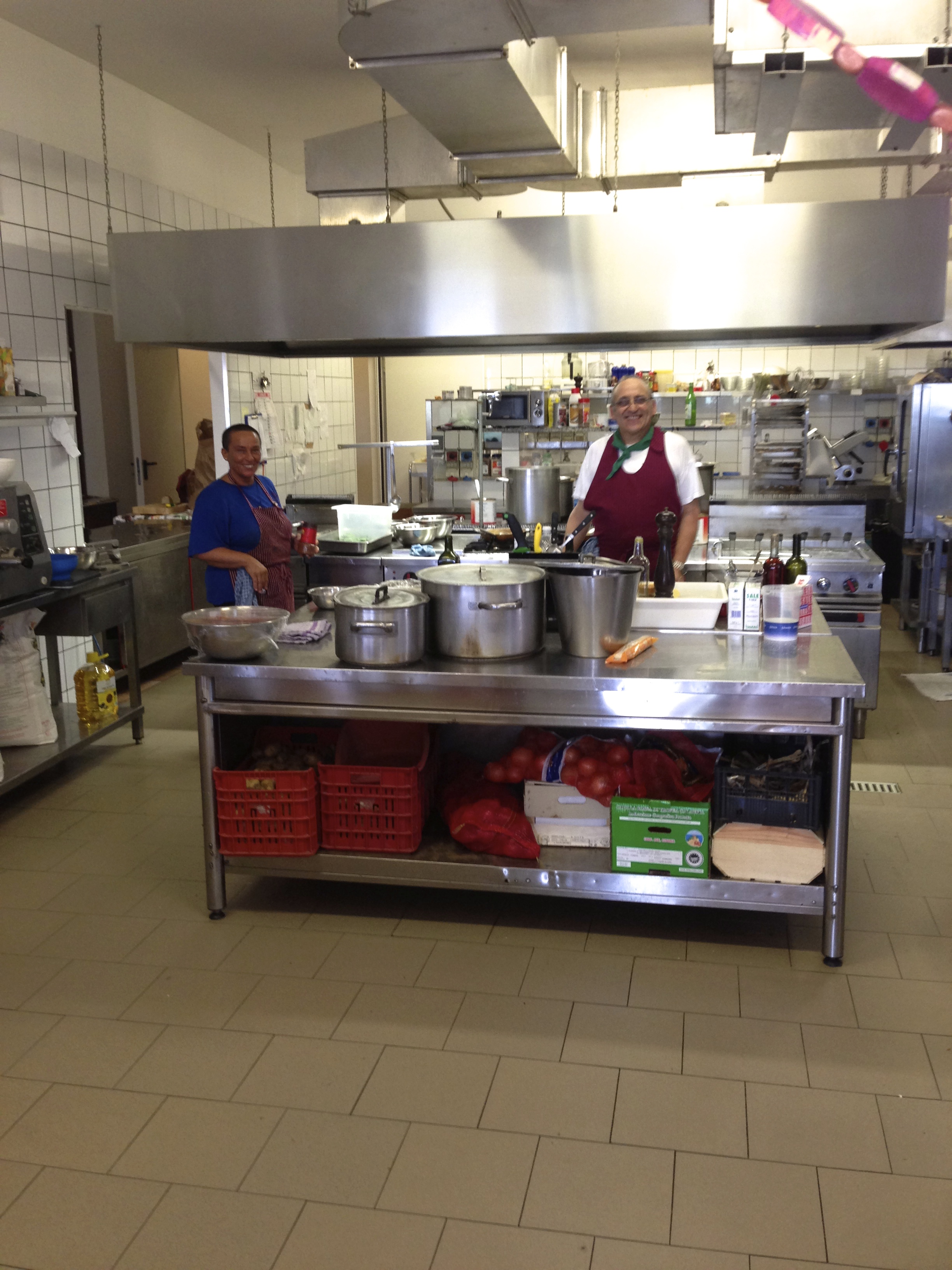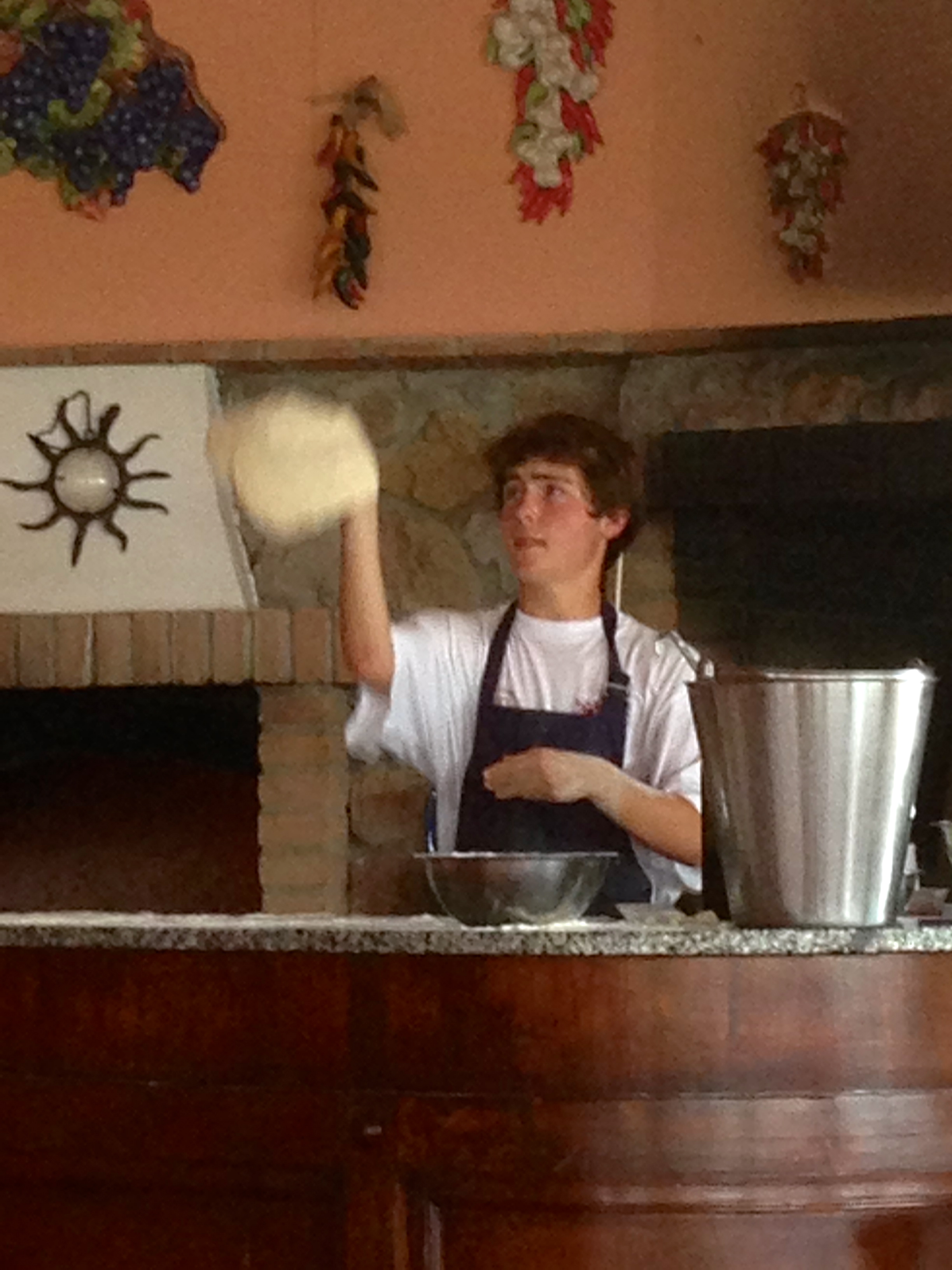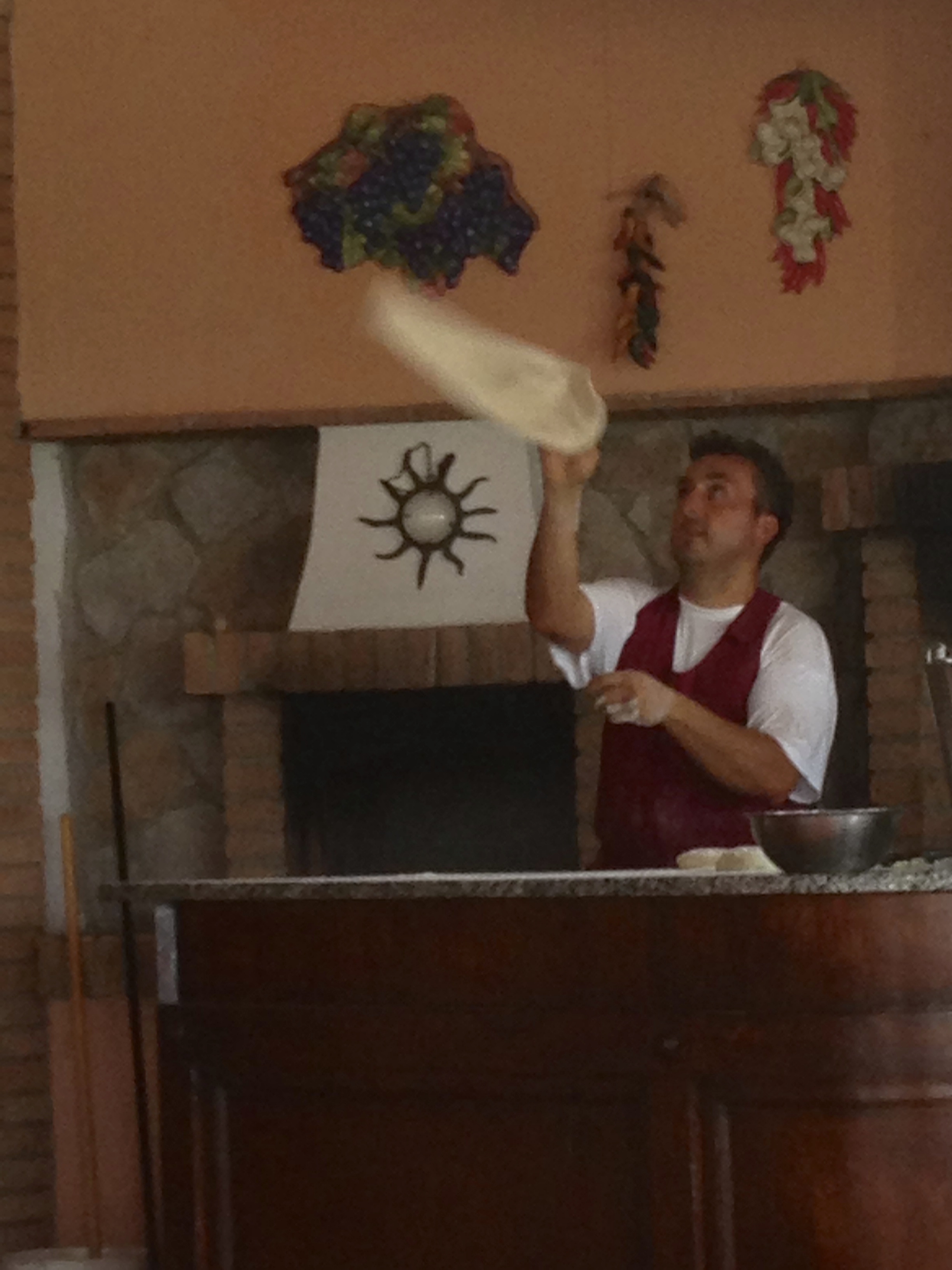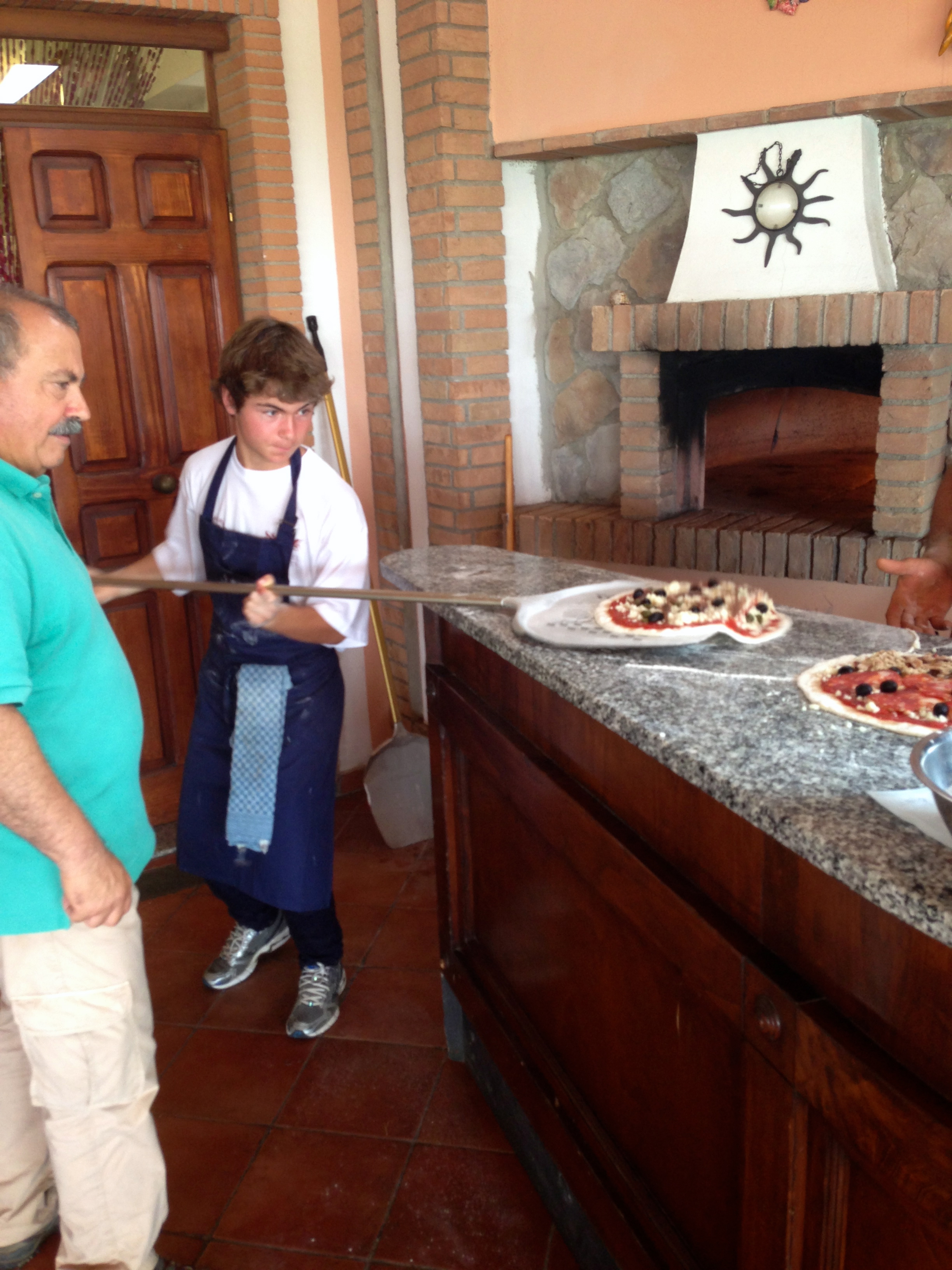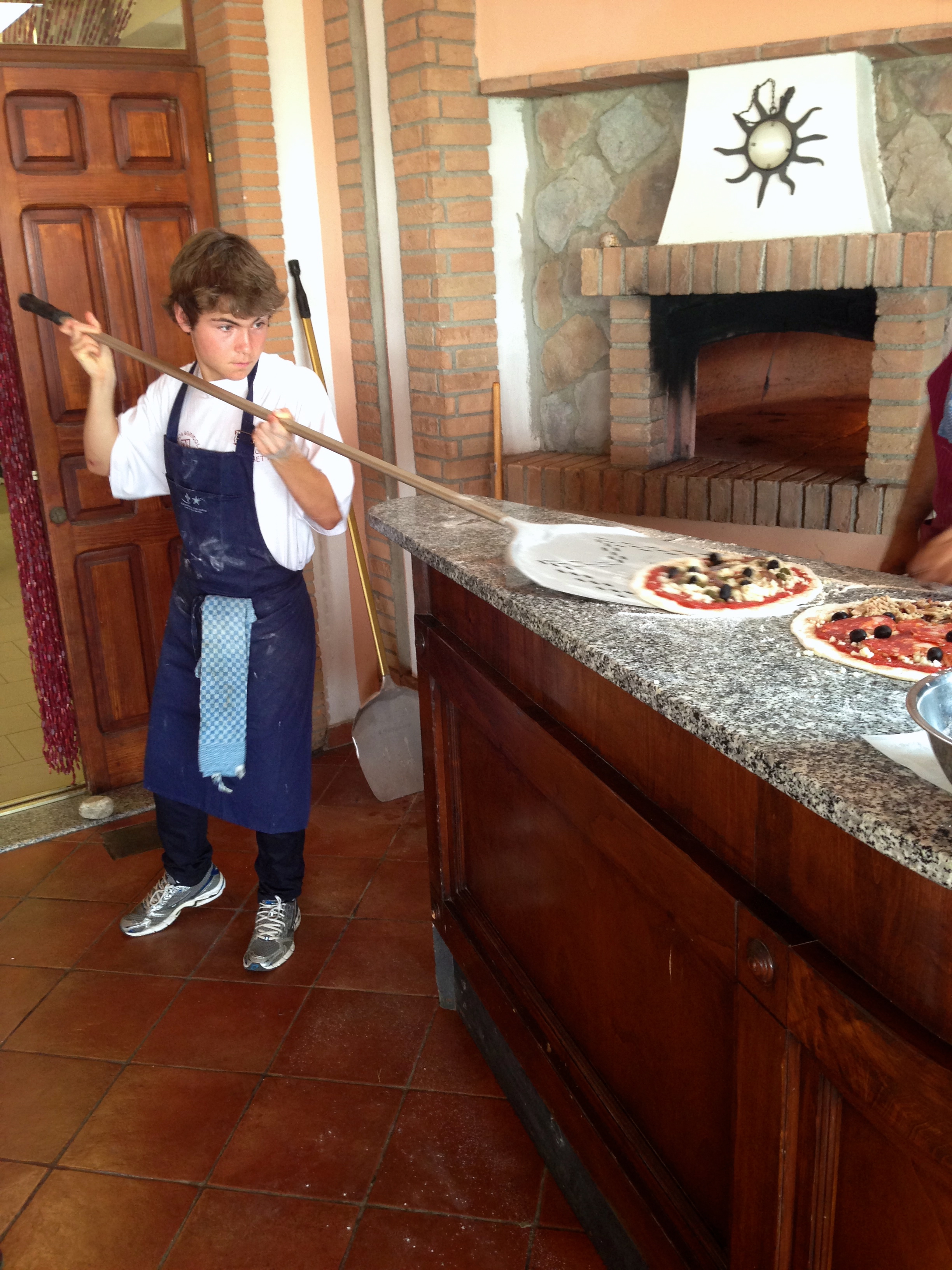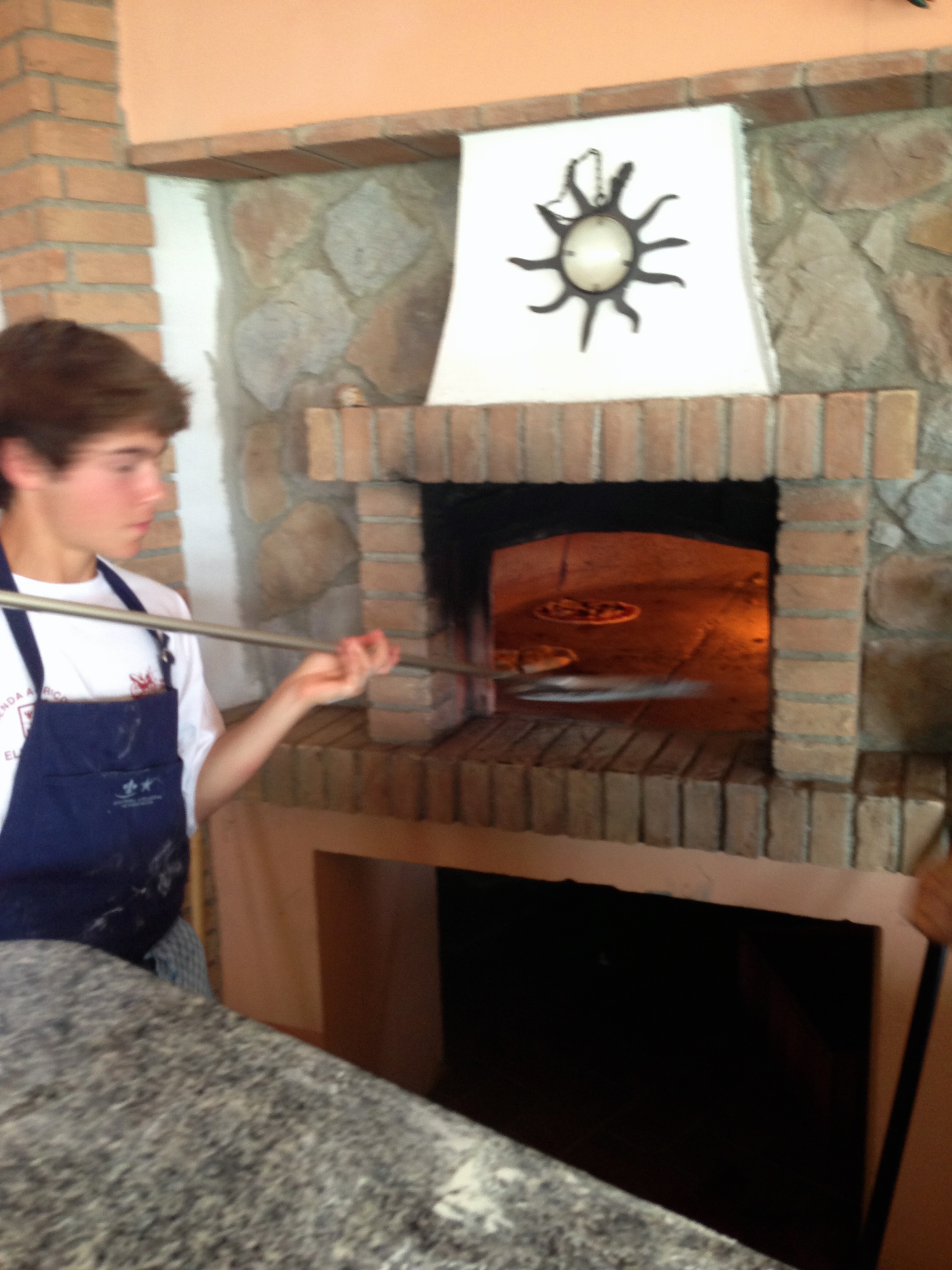As my last adventure in Tuscany, but certainly not least, I studied the art of creating authentic Italian pizza in a wood-burning oven from the master pizzaiolo, Leonardo. It turned out that the head chef of the Agrihotel Elisabetta also used to be a pizzaiolo, which is an entirely different profession compared to cooking in the usual restaurant kitchen. People who want to become pizzaiolos (pizzaioli is the correct plural form in Italian) have to study just to do that, because it takes great skill and knowledge about the pizza-making process and the different aspects that will affect the pizza’s outcome.
I soon learned that whipping out a classic Italian pizza does take great skill. It’s difficult. The first three pizzas I made came out beautiful, as if Leonardo himself did it. It was an incredible feeling to be holding a traditional plate of Italy in my hands, something that any foreigner would kill to taste, and having cooked it myself. But I soon learned that I had some beginner’s luck.
I had made Luigi a pizza with two anchovies ( “I always put just two”, he told me), and a pizza with the classic anchovy-olive-caper combination, and one with spicy salami for my kitchen co-workers. I helped Luigi taste-test his pizza, as we talked the talk, and then I ran back to the oven to whip up Leonardo’s pizza. He wanted prosciutto and mushrooms, so I did the usual routine. I slapped another ball of dough, one of the many I had shaped and prepared the morning before, on the floured granite countertop. All of the lunch customers were fed, so this was to be the last pizza made. The granite countertop was getting warm.
I spread out the pizza as my instructor had taught me (a circle motion with your hands, and “slap it down like a man, and don’t lightly caress it with your fingertips like a woman!”). Feeling confident after producing such magnificent pieces of work before, I tried tossing the dough into the air a few times. The dough wasn’t really stretching (I obviously wasn’t throwing it correctly), but it felt good anyways, and the dough didn’t break, so I continued tossing it. Toss toss toss. I kept going as a few more photos were taken. Plop! The dough landed right on the rickety floorboards.
Now the granite was getting dangerously warm. I hurried to repeat the stretching process with a fresh ball of dough (without tossing it in the air, or course). After a ladle full of salsa pomodoro, a handful of mozzarella, a few slices of prosciutto, and a couple of mushrooms, the pizza was ready for the oven. Here comes the true test of pizzaiolo skill. The trickiest part is sliding the pizza onto the giant spatula. You have to jerk the pizza to slide onto the spatula little by little, without jerking too hard to avoid breaking it. I had taken too much time to make the pizza, and the granite countertop had become too warm. Thus, the dough was sticky and soft, and I wasn’t able to jerk Leonardo’s pizza onto the spatula. I could only manage to get half of it on, and the other half was hanging off and slightly smushed.
What do you do with a perfectly good pizza that won’t slide onto the spatula in one? You fold it, and tell the customer he ordered a calzone!
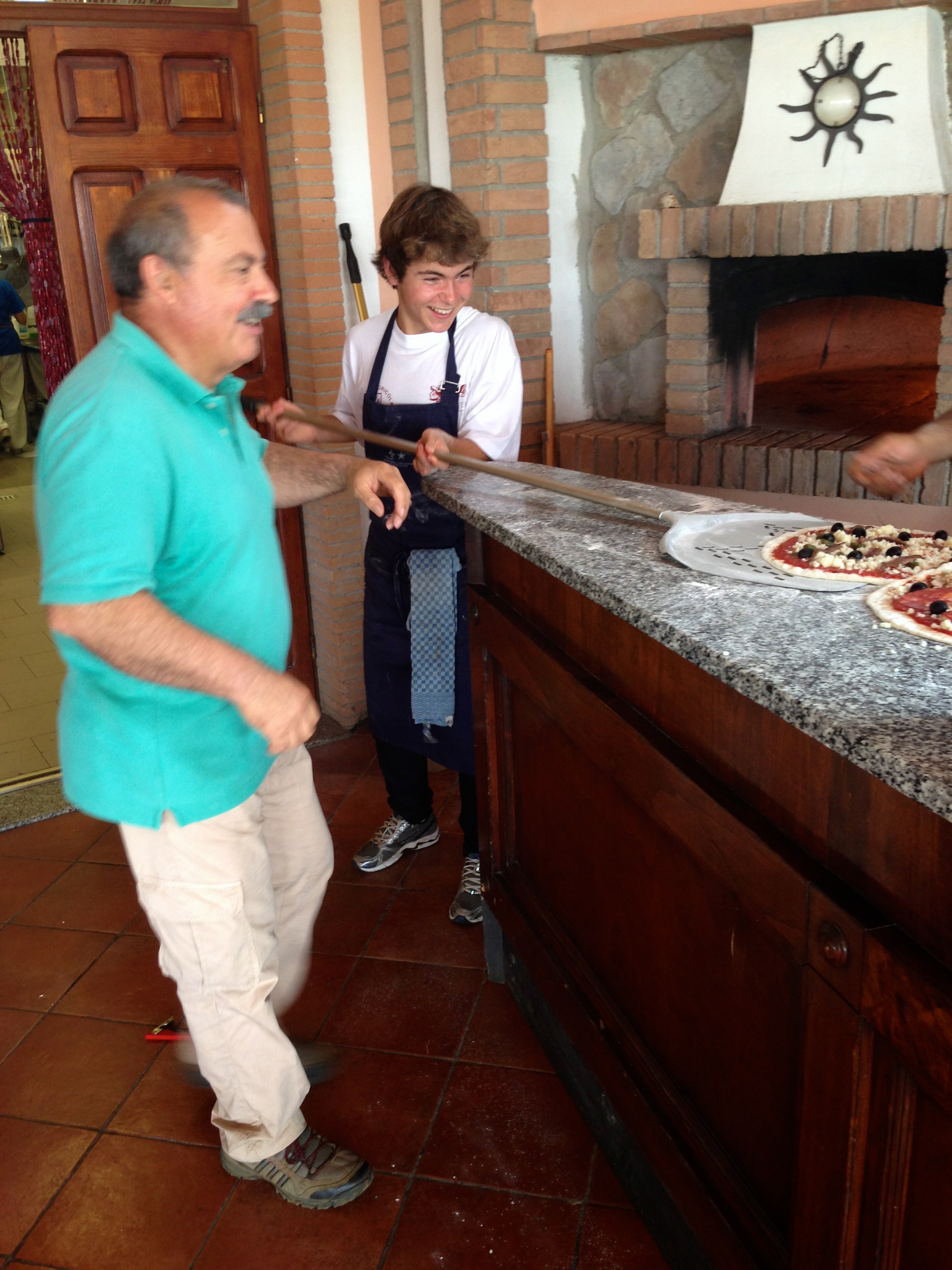
The tricky part of placing the pizza in the oven: getting it on the spatula. Luigi monitors the situation.
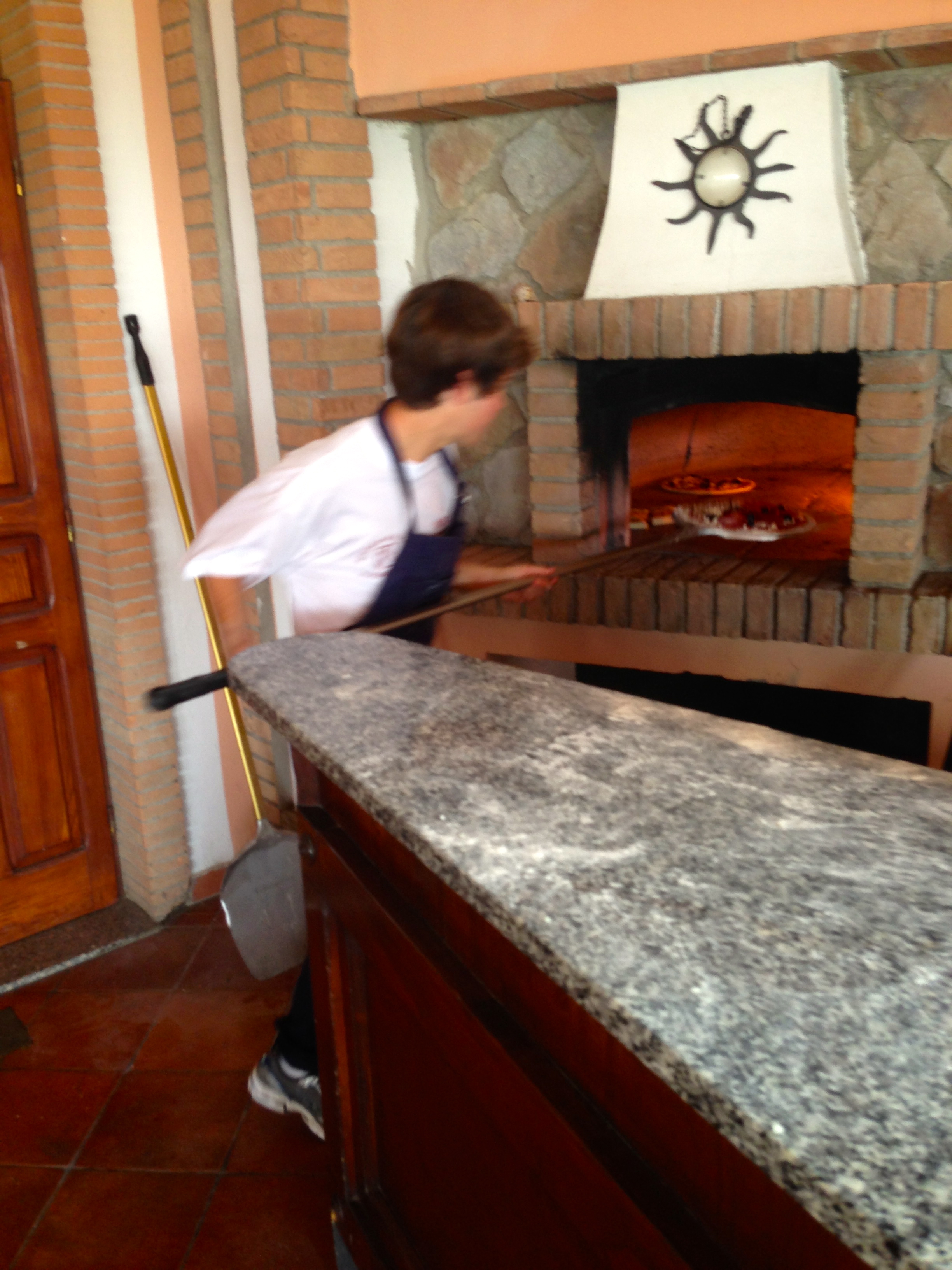
In the end, I got it in the oven. But this is a picture of my first pizza, which was a success. This isn’t the calzone.
The Agrihotel serves pizza for lunch every Saturday. That next Saturday I returned to the wood-burning oven with the hope of rediscovering my beginner’s luck. Instead, my friend Léon and I ended up eating calzones for lunch. But hey, they were good. And didn’t I order a calzone anyway?
To top things off, I am going to reveal the Agrihotel’s secret to an elastic pizza dough. This dough makes a beautifully light and delicate crust for a true 100% Italian pizza.
The secret to a perfect pizza dough according to Luigi Brunetti: Pig Lard (strutto di maiale)
I do not have the exact proportions of each ingredient in the dough, but I do hold the knowledge of what the ingredients are.
- All-Purpose Flour
- Water
- Brewer’s Yeast
- Salt
- a touch of Sugar
- Pig Lard
The trick: If you use 10 grams of yeast, then put in 20 grams of pig lard (always double), and 5 grams of sugar (always half).
And that, my friends, concludes an exciting two week journey at the Agrihotel Elisabetta in Tuscany, Italy. Who knows? Perhaps I shall return soon…
